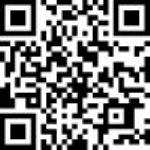期刊目錄列表 - 56卷(2011) - 【教育科學研究期刊】56(4) 十二月刊
 Directory
Directory
臺灣中小學奈米科技實驗教材之內容分析
作者:趙毓圻(國立臺北教育大學自然科學教育學系研究生)、熊召弟(國立臺北教育大學自然科學教育學系教授)、于曉平(國立臺中教育大學特殊教育學系助理教授)
卷期:56卷第4期
日期:2011年12月
頁碼:1-42
DOI:10.3966/2073753X2011125604001
摘要:
本研究旨在探究奈米國家型第一期人才培育計畫(2003至2008年)中小學種子教師自主發展的實驗教材所含有的奈米科技重要概念的出現頻率和關聯性。樣本包含209份教材,以Stevens、Sutherland與Krajcik(2009)提出的九項奈米尺度科學與工程重要概念:尺寸與尺度、物質構造、尺寸效應、力與交互作用、量子效應、自組裝、工具與儀器、模型與模擬、科學、科技與社會等為分析類目,首先依照各重要概念的定義,編製「奈米科技關鍵詞彙表」,並使用Excel計數功能,分析國小、國中和高中各學習年段教材中的重要概念出現頻率和關聯性。研究結果發現:各年段中,高中實驗教材含有的奈米科技關鍵詞彙數量最多,且各重要概念間呈現高關聯性;整體中小學實驗教材的各重要概念出現頻率和相互關聯性的結構裡,以「尺寸與尺度」、「物質構造」和「尺寸效應」呈高出現頻率及高關聯性。本研究結果可作為未來建構臺灣中小學奈米科技課程指標,以及發展奈米科技教材之參考。
關鍵詞:內容分析、奈米尺度科學與工程重要概念、奈米科技教育
 《詳全文》
《詳全文》

Journal directory listing - Volume 56 (2011) - Journal of Research in Education Sciences【56(4)】December
 Directory
Directory
Content Analysis of Nanotechnology Experimental Teaching Materials in Primary and Secondary Schools in Taiwan
Author: Yu-Chi Chao(Department of Science Education, National Taipei University of Education),Chao-Ti Hsiung(Department of Science Education, National Taipei University of Education),Hsiao-Ping Yu(Department of Special Education, National Taichung University)
Vol.&No.:Vol. 56, No. 4
Date:December 2011
Pages:1-42
DOI:10.3966/2073753X2011125604001
Abstract:
This study investigates the occurrence and relationships among significant nanotechnology concepts employed in the experimental teaching materials developed by primary and secondary seed teachers during Phase I of the National Science and Technology Program in Nanotechnology (2003 to 2008). This study adopts the core principles or “big ideas” of nanoscale science and engineering education, namely size and scale, structure of matter, forces and interactions, quantum effects, size-dependent properties, self-assembly, tools and instruments, models and simulations, and science, technology, and society (Stevens, Sutherland, & Krajcik, 2009), to compile a checklist of scientific terms in nine dimensions, and uses Microsoft Excel to analyze 209 teaching materials from each educational level. The investigation results revealed that 10 to 12 teaching materials from each level used more scientific keywords and had stronger relationships; the highest occurrence frequency and strongest relationships were between size and scale, structure of matter, and size effects. The results of this study can provide a reference for establishing nanotechnology curriculum indicators of primary and secondary education and developing nanotechnology teaching materials.
Keywords:content analysis, “big ideas” of nanoscale science and engineering, nanotechnolog education